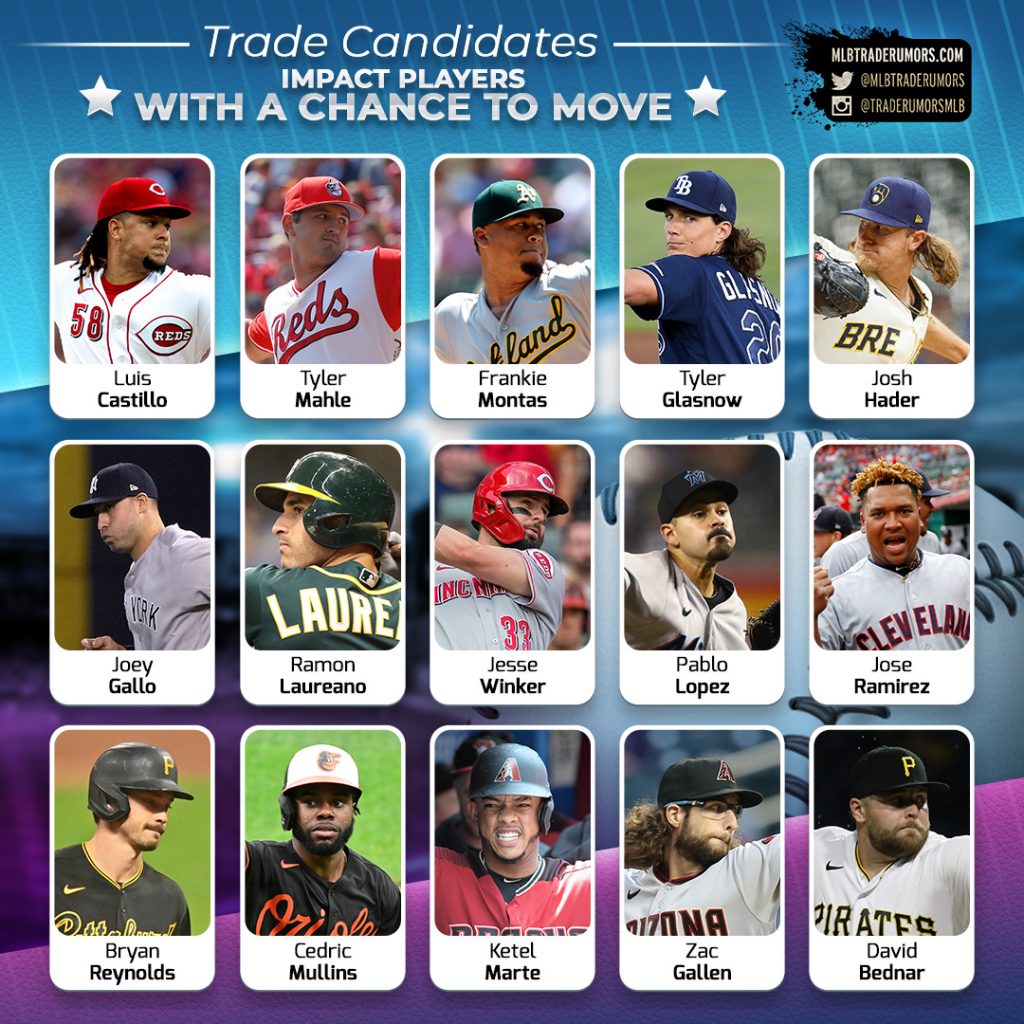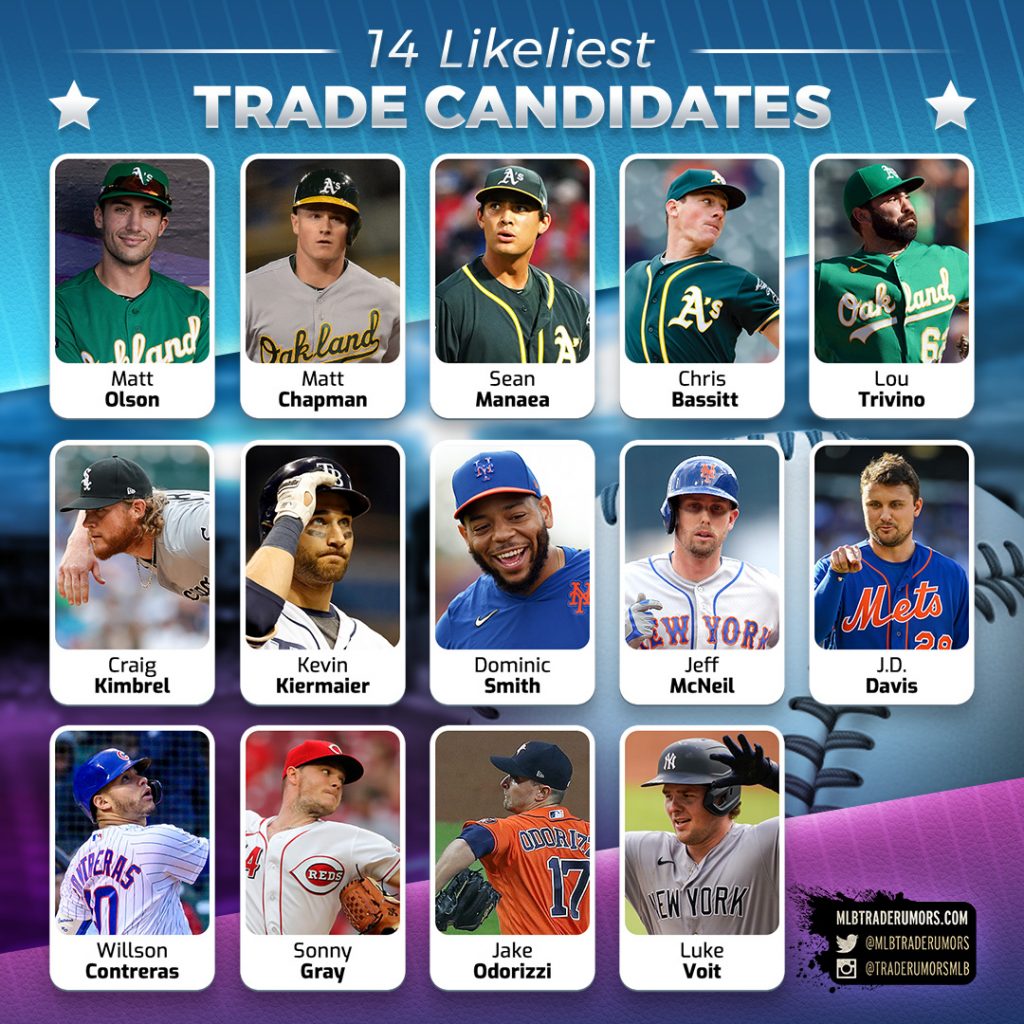4:29 pm: The Jays also had interest in Gray and Castillo before the lockout, tweets Ben Nicholson-Smith of Sportsnet. That’s hardly a surprise, given that all three Cincinnati arms figure to draw plenty of attention from rival clubs whenever the transactions freeze ends.
12:51 pm: The Blue Jays had Tyler Mahle on their radar as a trade target before the lockout, as TSN’s Scott Mitchell hears from a source that the Jays “were very interested” in the Reds right-hander. The exact timing of the Jays’ interest isn’t specified, or whether or not the club may have moved on from big-ticket pitching acquisitions after signing Kevin Gausman.
Cincinnati GM Nick Krall began the offseason with a quick trade of catcher Tucker Barnhart to the Tigers, and followed that deal up with his now somewhat infamous statement that the Reds “must align our payroll to our resources and continue focusing on scouting and developing young talent from within our system.” Wade Miley (who had a $10MM club option for 2022) was then placed on waivers and claimed by the Cubs, thus sparking even more speculation about just how much payroll the Reds were looking to shed.
As such, players like Mahle, Luis Castillo, Sonny Gray, and many other veteran Reds players were immediately seen as trade candidates, even though Cincinnati didn’t make any other overt cost-cutting transactions before the lockout hit. As MLBTR’s Anthony Franco speculated last month, it could be that between the Barnhart/Miley moves and Nick Castellanos’ likely free agent departure, the Reds might have already gotten their finances in order. On top of that, the Reds were reportedly open to discussing Gray in trade talks but not either Mahle or Castillo.
This isn’t to say that the Reds wouldn’t at least listen if Toronto or another team came calling with a big offer, and if the Reds still had designs on contending in 2022, the Blue Jays could offer some combination of both young talent and big league-ready pieces. Cincinnati would likely only accept such a significant trade package for Mahle given that he is both controlled through the 2023 season and coming off the strongest of his five years in the majors.
The 27-year-old righty has been both durable (227 2/3 innings) and effective since the start of the 2020 season, posting a 3.72 ERA and a 28.3% strikeout rate, though Mahle’s 8.9% walk rate was below the league average. Mahle did have strong fastball spin rates in both seasons, and 2021 saw Mahle post far and away the best hard-hit ball rate of his career.
Mahle seems overqualified for a fourth or fifth starter role, yet that might be where he lines up in a Toronto rotation that also consists of Gausman, Jose Berrios, Hyun Jin Ryu, and Alek Manoah. Ross Stripling is penciled in as the fifth starter for the moment, though as Mitchell notes, Stripling “profiles better as a swingman and spot starter” than as a regular rotation member. Top prospect Nate Pearson is likely going to be on an innings limit after two injury-plagued seasons, so while a Pearson/Stripling combo isn’t bad on paper, the Jays might prefer to shift both pitchers into depth roles and cement their rotation by adding some sort of veteran starter, perhaps even one as accomplished as Mahle.
While it remains to be seen if Cincinnati will ultimately deal any of its three starters, the fact that all three may be available to some degree gives the Reds some leverage in talks. In that sense, the Jays aren’t only bidding against other teams interested in Mahle, but also against what other teams (like the Dodgers or Angels) might offer the Reds for Castillo and/or Gray. Given how aggressive Toronto GM Ross Atkins has been in searching out pitching options over the last few years, it is probably safe to assume that the Jays have also checked in on obtaining Castillo or Gray, though only the Blue Jays front office knows which Cincinnati starter is their chief target.

